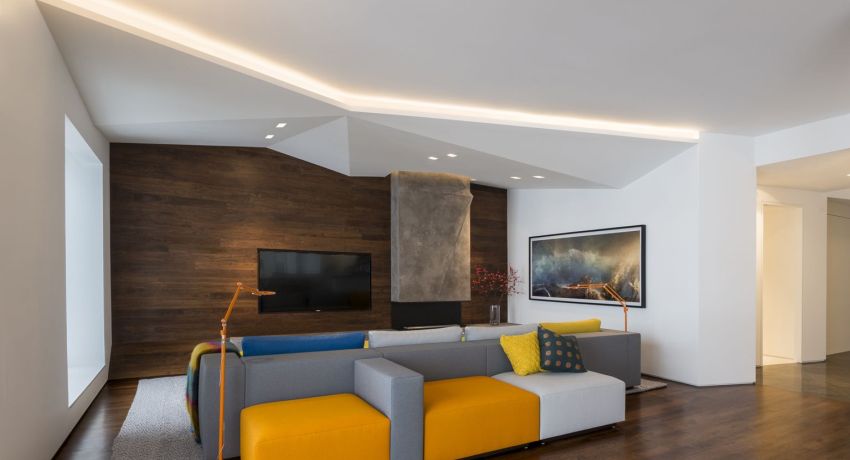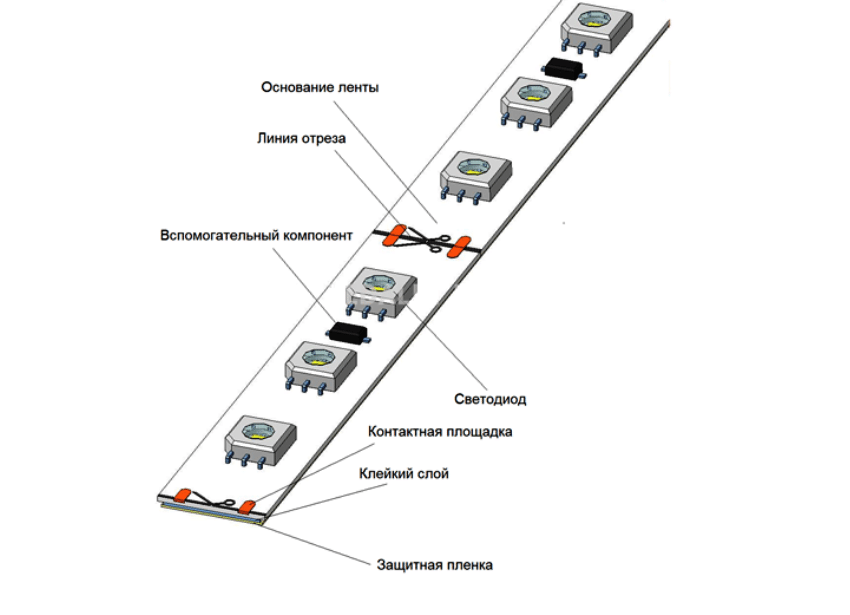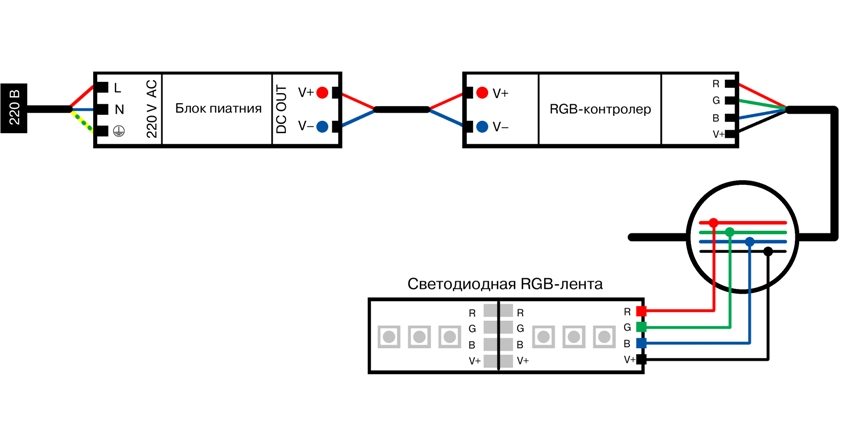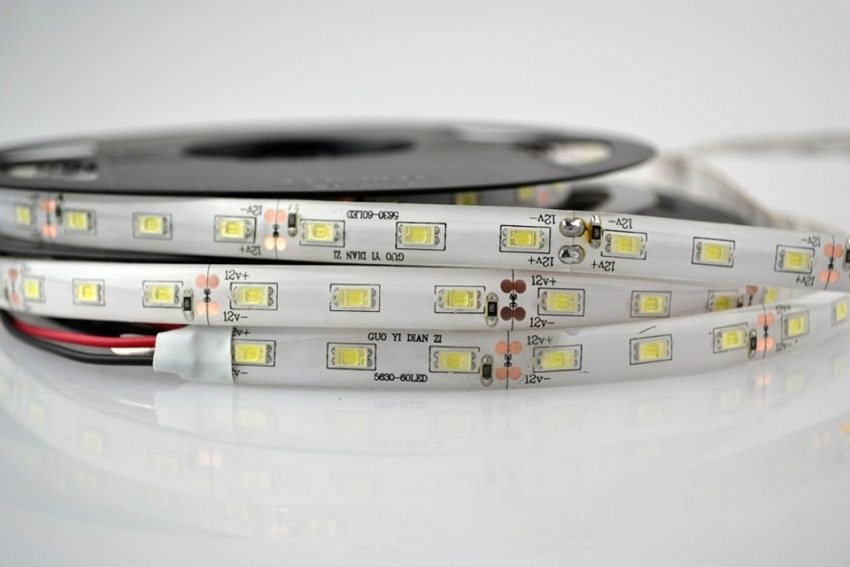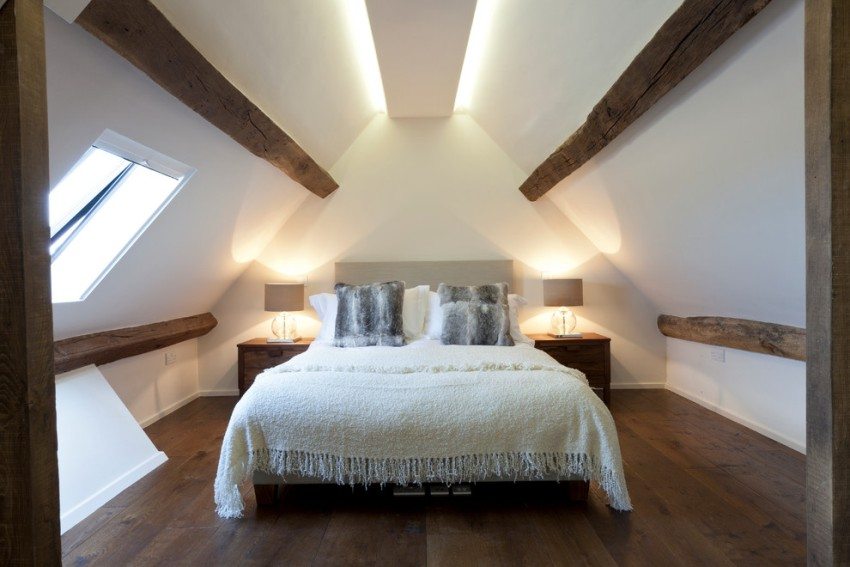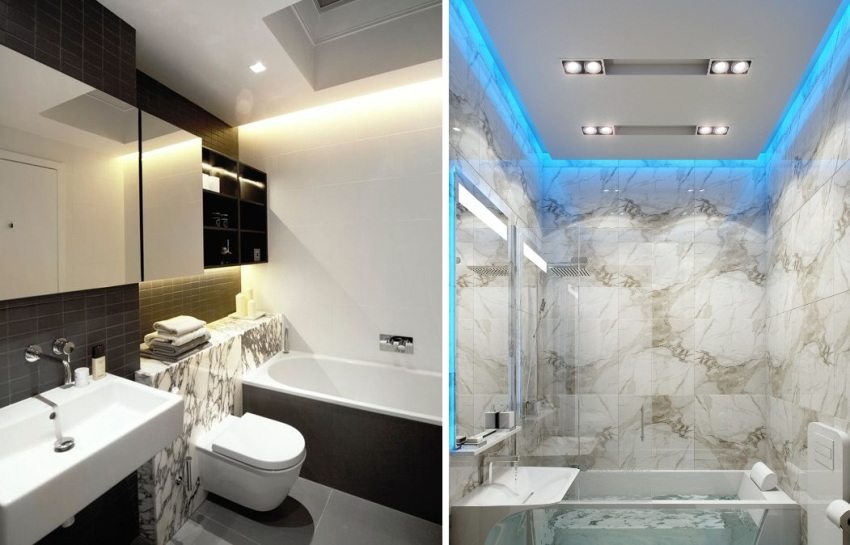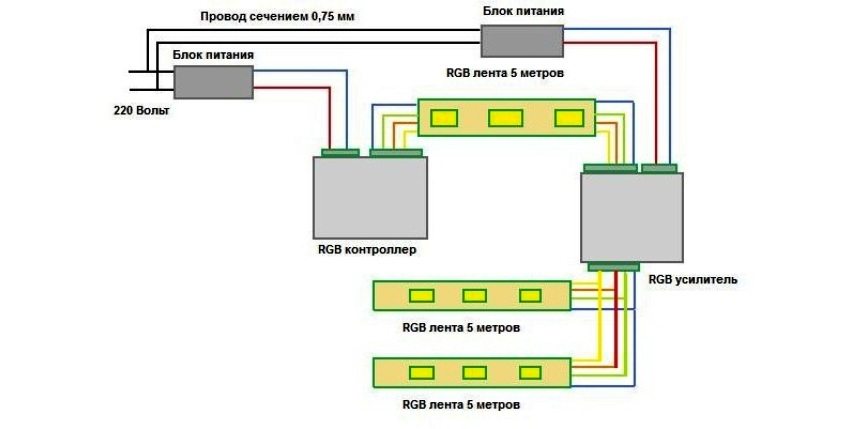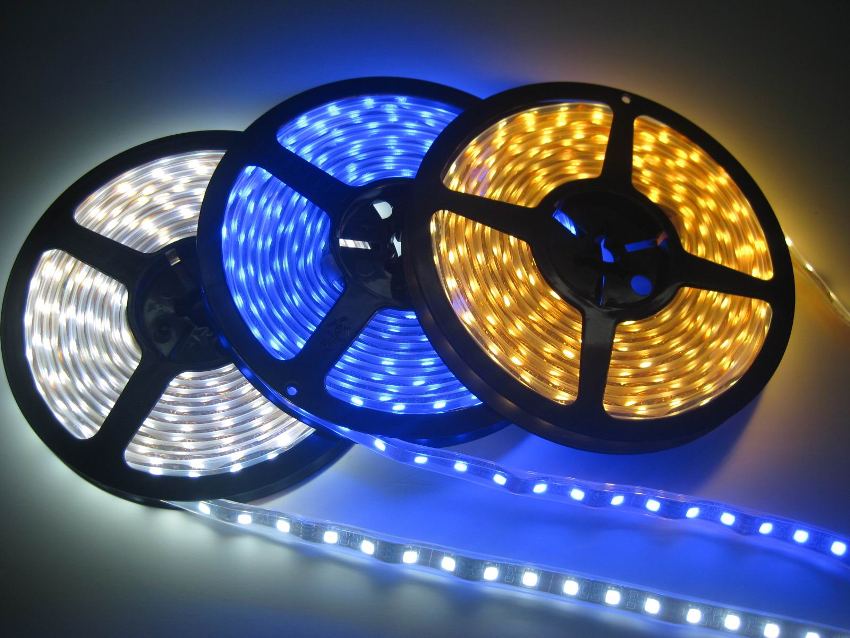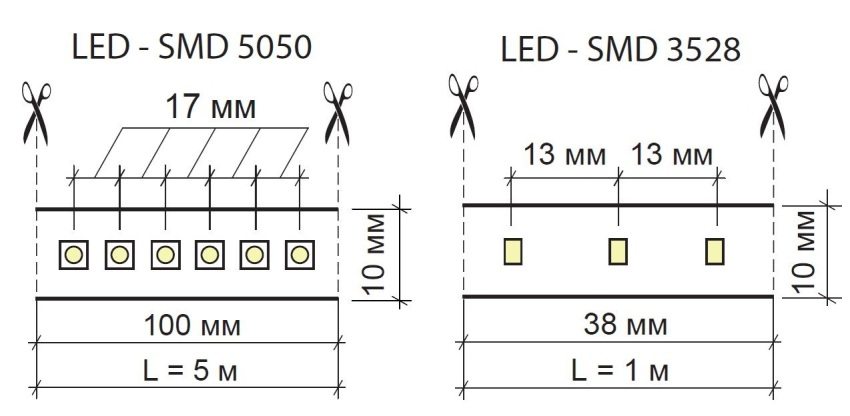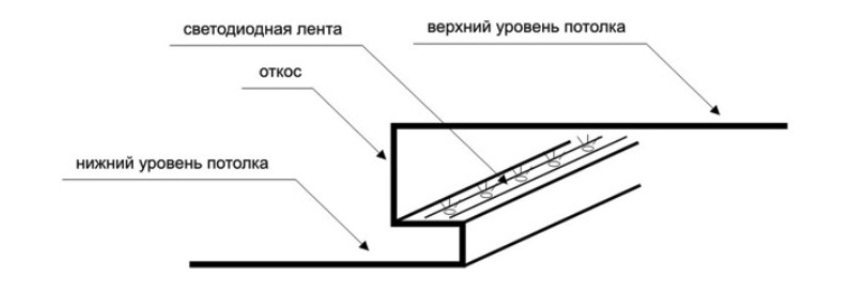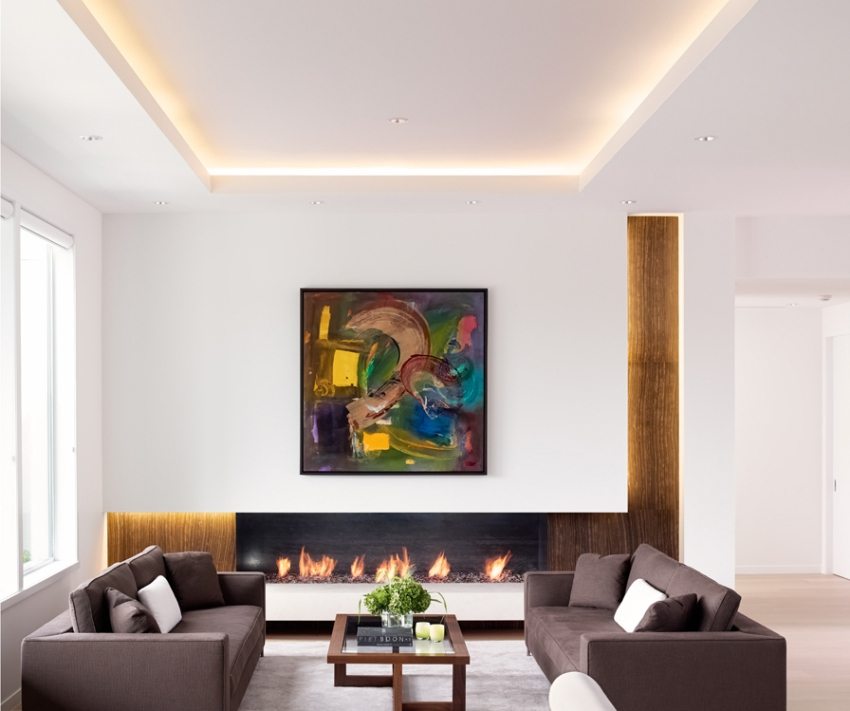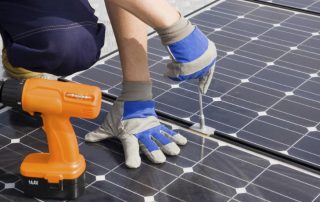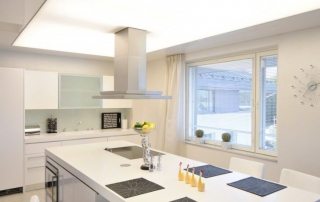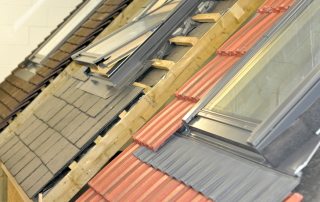LED strip for ceiling lighting is a unique element of interior design. Such lighting has become almost the first tool that helps to add volume to even the smallest room, and at the same time give visual lightness to modern suspended structures.
Content [Hide]
LED strip for lighting ceilings. How to choose?
The choice of lighting for any ceiling structure is quite wide these days. It can be organized using:
- conventional incandescent lamps;
- luminescent shades;
- neon lamps;
- LEDs.
Any of the above products can be used in modern design solutions. Using one type of ceiling light or a combination of different options allows you to create unique lighting effects. When choosing a ceiling lighting option, you need to carefully consider such points as:
- service life of the lighting device;
- the minimum level of heat generated;
- ease of installation and replacement if necessary;
- profitability.
LED strip meets all the requirements for lighting fixtures. Ceilings with similar lighting are very popular with craftsmen, designers and ordinary people. LED strip for lighting ceilings is a unique flexible material on which there are paths responsible for conducting electricity through it. Diodes are attached to the conductors, which are light sources.
The main advantage, due to which more and more buyers opt for just such a backlight option, can be called low power consumption. A ten-meter LED strip uses much less energy to glow than a conventional incandescent lamp, but the light from the diodes is much brighter. The lifespan of LEDs is much longer than that of filament lamps. To create a unique interior, the flexibility of such a product is important. And also its ability to provide backlighting of different brightness and in a variety of colors.
The main subtleties of choosing an LED strip and their varieties
When choosing an LED strip for lighting the ceiling, you should pay attention to such points as the density of the diode lamps on the strip, the power they consume, and the presence of moisture protection. The color spectrum of diode strips is quite different, they can be divided into monochrome and universal. Monochrome can only give light of one color. Universal or RGB tapes glow in different colors: red, blue, green. RGBW stripes also use white backlighting.
Related article:
Lighting in the bathroom, photos of various options. Ceilings with one type or another of lighting fixtures. What are the best lamps to use to create bathroom lighting. Safe illumination.
The cost of diode strips is about the same, so RGBW should be used for arranging interesting interior options. A special controller can be supplied with it, which allows you to adjust the color gamut and backlight intensity.
Also, similar light sources differ in the density of the diodes. This figure varies from 30 to 120 pieces per meter. For illumination of a large area, it is better to use a tape with a high density, and for directional light radiation, a lower indicator is suitable. Some designers successfully combine both options, if space permits.
Power consumption is an equally important parameter. The brightness of the LED itself depends on this figure. The most famous are the SMD 5050 and SMD 3528 models. The power of the former at a density of 60 pcs / m is 4.8 W / m, and the second at the same density of 14.4 W / m. On which of the options it is worth stopping your choice, you need to decide on your own, depending on the goals and tasks that the backlight will perform.
Often, LED strip for lighting the ceiling is used in bathrooms. For such premises, strips protected from moisture are suitable. There are also moisture resistant options that can be mounted directly in the water. The cost of such products also depends on the degree of protection.
Useful advice! If the total backlight power is quite high, you can purchase several small power supplies instead of one large one.
LED strip placement options
LED strips for ceiling lighting can be placed in various places of suspended structures. Let's consider the most common ones.
Suspended niche
With such an arrangement, the suspended structure of a multi-level ceiling seems light and literally floating in the air. The niche is specially equipped for lighting. Depending on the placement of the tape inside such a "pocket", different lighting effects can be obtained. If the LEDs are directed upwards, a soft diffused light can be obtained. When designing a diode strip along the side of the niche, the light will turn out to be directional and will gently slide alongfloating ceilinga".
LEDs inside the pendant structure
This lighting option is used only in conjunction with semi-transparent stretch ceilings. The tapes are located directly between the material and the main ceiling. Such an arrangement gives the room a soft, diffused light and creates the feeling of a ceiling glow from the inside.
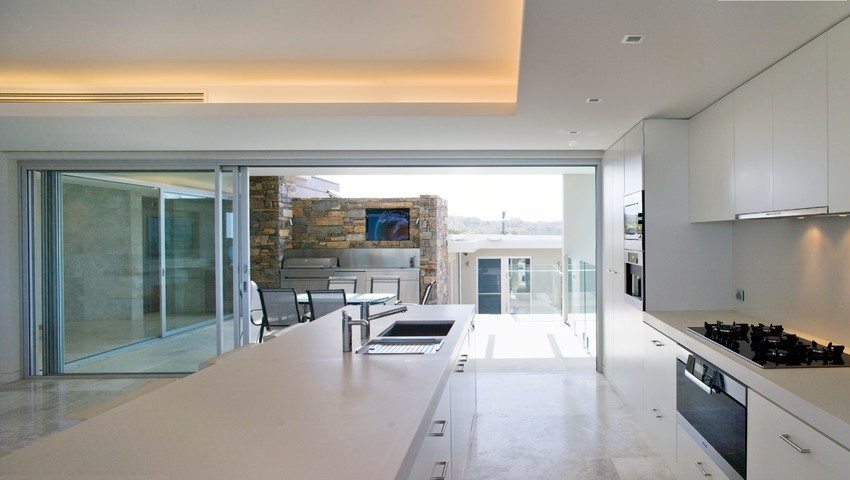
Backlight ceiling in the kitchen
More interesting are the backlighting options that are combined with a delicate pattern made on the material of the tension structure. With the help of such an original tandem, you can either get an imitation of a real solar glow or a starry night sky. Patterns made with LED strips inside tensioning structures are considered no less interesting.
Useful advice! When creating a flashing ceiling light, you cannot use the following frequencies: 0.5, 2, 7 Hz per second. They coincide with the rhythms of the brain and can even provoke an epileptic seizure.
Cornice lighting
This way of creating decorative lighting is pretty simple and easy. Suspended or tension structures are not required for its arrangement. For these purposes, use a conventional cornice with a width that allows you to place an LED strip behind it. The fastening of such an interior element is carried out to the wall either with an adhesive solution or using fasteners. The tape is glued directly to the edge of the eaves.
Installation of LED strip
Any LED strip is equipped with a special adhesive layer that allows you to easily attach it to various surfaces. The surface before attaching the light strip is thoroughly cleaned of dust, dirt and debris. Such a measure will allow the backlight to last much longer.
Diode strips are sold in special coils of 5 meters. If you need a shorter length, then you can simply take scissors and cut off the excess. This should be done only at the designated cut point. For soldering tapes and connecting wires to them, you must use a low-power soldering iron.
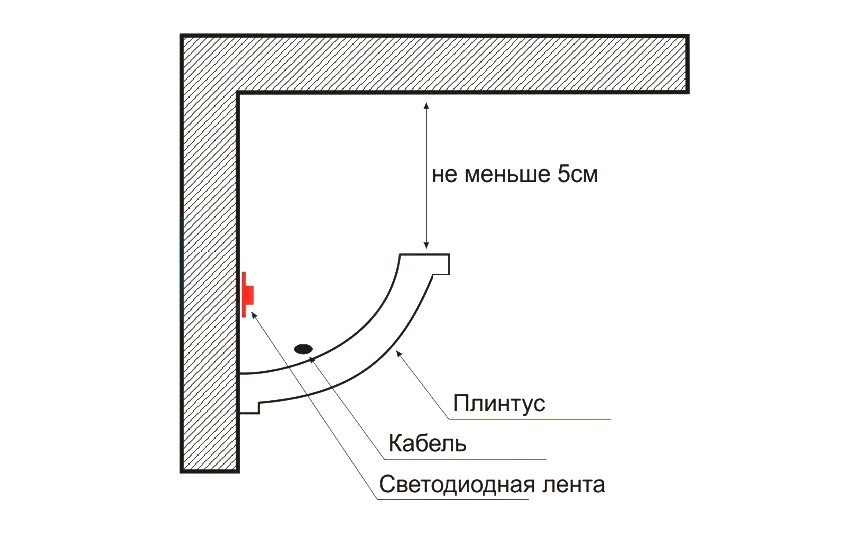
The layout of the RGB tape under ceiling plinth
Useful advice! If you plan to install light elements on your own, it is worth remembering that you cannot connect 3 five-meter tapes in series. It is better to separately lead the wires from each element to the controller.
The diode strips are powered using a 12 or 24 V step-down power supply. You need to purchase it additionally or immediately buy ready-made kits, including a reel with diodes, a remote control and Power Supply.
